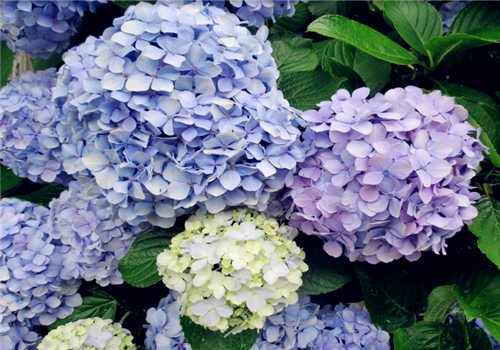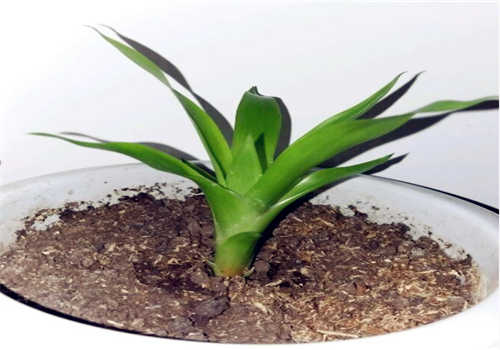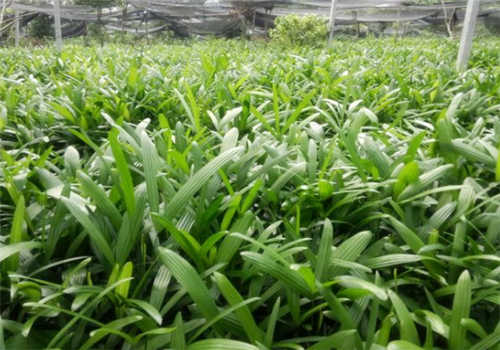How to raise hydrangeas? When is the best time for ramets?
Hydrangea is dignified in appearance, rich in variety, sometimes bright and sometimes beautiful, often known as eight Immortals, Hydrangea. The ornamental florescence is long, and like the semi-overcast environment, the balcony facing north can also be planted. So specifically, how to grow hydrangea? When is the best time for ramets?
Ramet time of Hydrangea
The ramet time of Hydrangea should be carried out before sprouting in early spring. Separate the rooted branches from the mother plant, pot directly, watering should not be too much, maintain in the semi-shady place, wait for new buds to sprout and then transfer to normal maintenance. In addition, hydrangea can also be propagated by cuttings and striping:
Crimping:
When the bud germinates, it can grow after 30 days, cut off from the mother plant in the following spring, transplant with soil, and blossom in the same year.
Cuttings:
During the rainy season. Cut the top twig, about 20 cm long, remove the lower leaves, cuttage temperature is 13-18 ℃, rooting 15 days after cutting.

Key points for the maintenance of hydrangea
1. Soil
The planting soil of hydrangea should be loose, fertile and well-drained sandy loam. However, the flower color is affected by soil acidity and alkalinity, acidic soil flowers are blue and alkaline soil flowers are red.
2. Watering
The potted soil planted with hydrangea should be kept moist, but it should not be watered too much, especially in the rainy season to prevent rotting roots caused by waterlogging. It is better to dry indoor potted plants in winter. If it is too wet, the leaves will rot easily.
3. Lighting
Hydrangea is a short-day plant, usually cultivated to avoid the hot sun, 60% to 70% shade is the most ideal. When the light is too strong in midsummer, proper shading can prolong the flowering period.
4. Temperature
The optimum temperature for the growth of Hydrangea is 18-28 ℃, and the winter temperature is not lower than 5 ℃. Flower bud differentiation takes 6-8 weeks under the condition of 5-7 ℃. The temperature of 20 ℃ can promote flowering, maintain 16 ℃ after anthesis, prolong the viewing period, and pay attention to the rapid discoloration of flowers caused by high temperature.
5. Fertilization
The flowering period of Hydrangea is from June to July. During the flowering period, there should be sufficient fertilizer and water, and fertilizer should be applied once a month.
6. Pruning
After hydrangea flowering, we should pay attention to remove the flower stem, promote the production of new branches, proper pruning, can keep the plant shape beautiful.
7. Change soil
Potted hydrangea usually turns the pot and changes the soil once a year. It is appropriate to turn the basin and change the soil in the first ten days of March. The new soil was prepared with 4 parts of foliage soil, 4 parts of garden soil and 2 parts of sand, and then an appropriate amount of rotten cake fertilizer was added as base fertilizer. When changing, it is necessary to prune the roots of the plant, cutting off rotten roots, rotten roots and overlong roots. After the plant is moved into the new pot, the soil should be compacted, watered and placed in a shaded place for about 10 days, and then moved outside for normal management.
8. Insect pests
Hydrangea is mainly caused by wilt, powdery mildew and leaf spot. Spray control with 65% Dysen zinc wettable powder 600 times solution. Insect pests are harmful to aphids and bug bugs and can be sprayed with 1500 times of omethoate EC.
Tips:
The maintenance of hydrangea in spring, summer, autumn and winter has something to pay attention to:
Spring: the dead branches of potted plants should be pruned and the soil should be turned over to change the soil. After taking the pot, the thin liquid fertilizer based on nitrogen fertilizer can be applied once or twice, which can promote the germination of branches and leaves.
Summer and autumn: should be placed in the semi-shade or under the curtain to prevent the scorching sun and prevent the leaves from yellowing and anxiety. Topdressing is applied once or twice before and after flowering to promote the reproduction of chlorophyll flowers. After the flower fade, the pedicel should be repaired in time to keep the posture beautiful. The basin soil is often moist, but it is necessary to prevent stagnant water after rain to prevent the succulent root of Hydrangea from rotting because of too much water.
Winter: after the beginning of winter, the plants cultivated in the open field should keep the soil warm so that they can survive the winter safely; the potted plants can be placed in a warm place facing south and without cold wind. Although the withered leaves fall off in winter, the roots and branches still survive, and new leaves germinate in the next spring.
Time: 2019-04-11 Click:
- Prev

What kind of plant is lucky? When do you divide?
Fortune is a common ornamental flower in the family, evergreen all the year round, beautiful inflorescences, rich colors, many flower friends are familiar with it, so when is the fortune good? How to divide? The time of good fortune to divide plants is suitable for April every year and the buds have more than 6 leaves.
- Next

When does the brown bamboo split? How to carry out daily maintenance?
Palm bamboo, also known as palm bamboo, is an evergreen foliage plant of Palm family. The viewing effect is very good, with some Jingshan, it has the feeling of tropical rain forest, so do you know when the brown bamboo will split? How to carry out routine maintenance? Brown bamboo split time brown bamboo ramet culture is usually carried out in spring combined with changing pots.
Related
- Fuxing push coffee new agricultural production and marketing class: lack of small-scale processing plants
- Jujube rice field leisure farm deep ploughing Yilan for five years to create a space for organic food and play
- Nongyu Farm-A trial of organic papaya for brave women with advanced technology
- Four points for attention in the prevention and control of diseases and insect pests of edible fungi
- How to add nutrient solution to Edible Fungi
- Is there any good way to control edible fungus mites?
- Open Inoculation Technology of Edible Fungi
- Is there any clever way to use fertilizer for edible fungus in winter?
- What agents are used to kill the pathogens of edible fungi in the mushroom shed?
- Rapid drying of Edible Fungi

